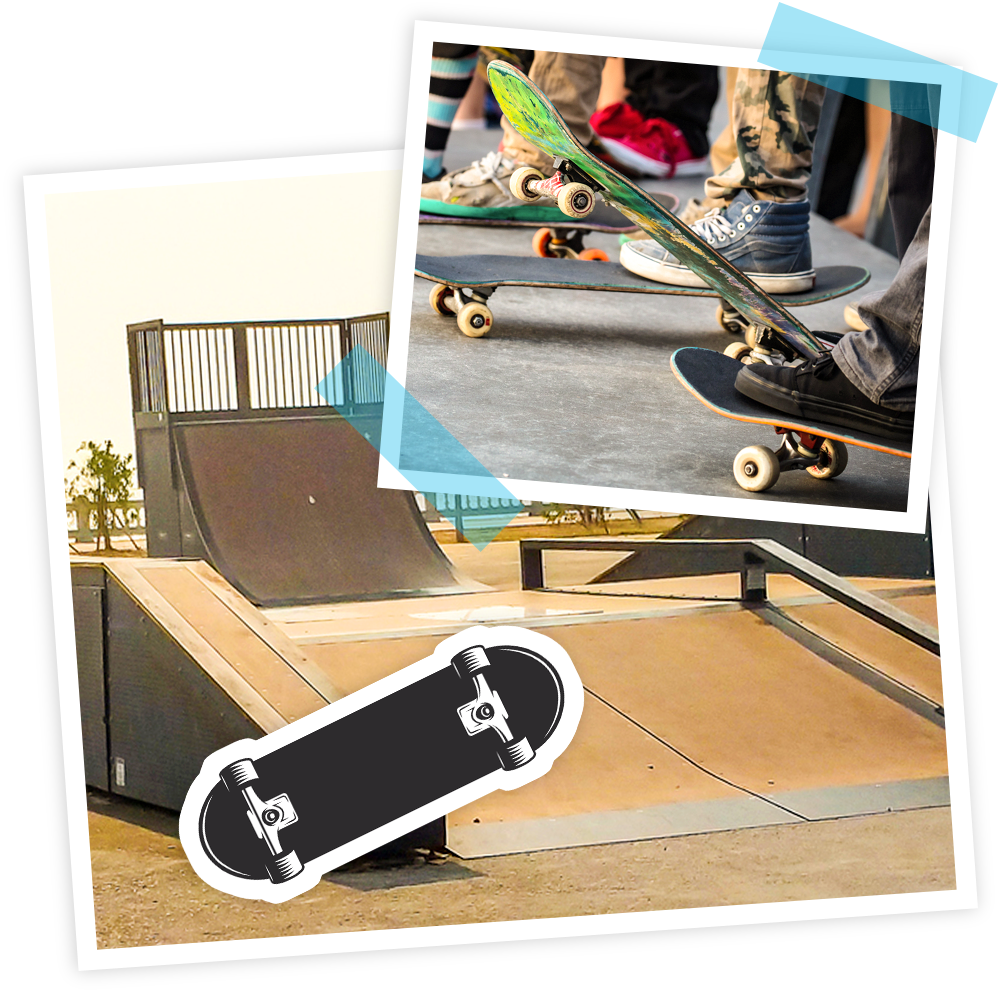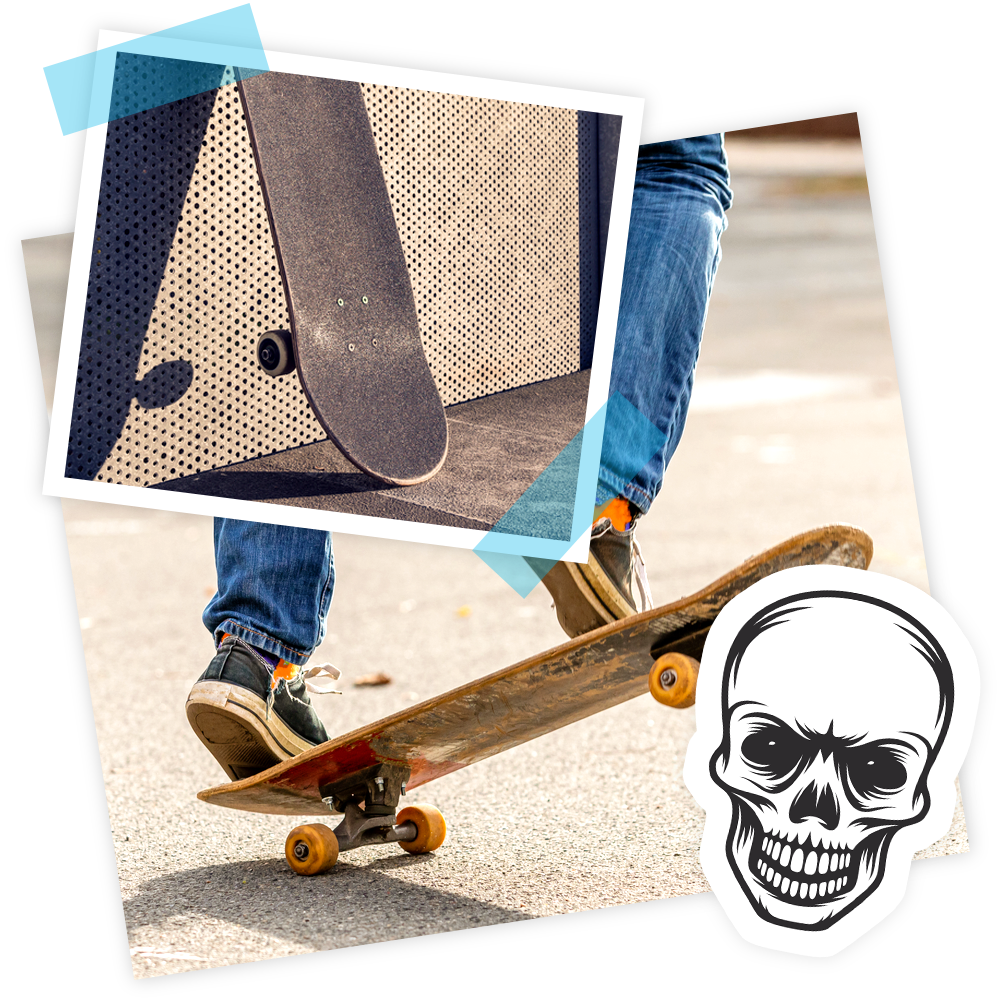The History Of Skateboarding
The History Of Skateboarding
When we look at the history of skateboarding, it's clear its popularity has dipped and risen over the years. It’s never been as big in the UK as it has been in the US or some other countries, but it still has a dedicated following that was initially born almost 50 years ago.


The global origins
of skateboarding
Skateboarding was first invented in the 1950s in California. It’s tricky to pin down the very first skateboard, but it was a sport created by surfers who wanted something to do when the waves were low. In the US it grew in popularity until it peaked around 1963, before a crash in the market in 1965. Skateboarding was seen as a fad that had run its course.
This changed in the early 1970s with the creation of urethane skateboard wheels, rather than the rickety old metal or wooden wheels on the original boards. The moulded wheels suddenly made it much easier to skate over less-than-perfect terrain. And within a couple of years, skateboarding finally began to make a mark in the UK.

Skateboarding
reaches the UK
It began with many teenagers importing skateboards, but soon grew in popularity enough to see dedicated shops popping up. Despite this, facilities for skateboarders in the UK were still rare, with only a handful of parks built to support this new trend. One of those was built in Southbank, and it still remains to this day as a free park. Yet according to reports of the time, underground is where skateboarders preferred to skate anyway, with teens taking to the streets and groups coming together in places such as abandoned car parks.


Skateboarding was viewed negatively by many traditional groups, with the Royal Society for the Prevention of Accidents coming out strongly against it, claiming that up to 4,500 British children could be hospitalised each year. This is despite the fact that, in a study conducted at the time, skateboards were only ranked 25th on a list of dangerous equipment, with ‘beds’ sitting much higher at 8th. After an initial spike of success, skateboarding then suffered a huge decline in popularity in the 1980s. It recovered elsewhere in the world but it was slower to regrow that popularity in the UK, bubbling along with a smaller fanbase until the mid-late 1990s when it peaked again.
It was during the 90s, with the rise of punk and hip-hop, that street skating began to get more popular as a sort of cultural movement rather than just a sport, a trend that would continue and thrive thanks to the developments on the horizon at the end of the decade.

Skateboarding and
the new millennium
There were then three major developments that took skateboarding into the mainstream both in the UK and worldwide. The first was the launch of the X Games by ESPN in 1995. Held in the US, this was the first major event to bring together extreme sports to crown the best in the world in various events including Skateboard Street and Skateboard Vert. It also produced some of skateboarding’s first true celebrities, as names became globally recognisable thanks to sponsorships and partnerships.


But what really brought skateboarding into the public eye for many was the popularity of video games in the late 1990s and early 2000s. The original PlayStation console had sold huge numbers, and the original Tony Hawks’ Pro Skater game released for the console in 1999 to rave reviews. Multiple sequels followed, each with a classic soundtrack, which helped propel the sport to new heights amongst the youth of the time.
And the final big development in pushing skateboarding to the masses is the accessibility of skateboarding content, particularly with video services such as YouTube. With cameras getting cheaper and easier to use, and internet speeds getting stronger, it’s now easier than ever to watch clips while you’re at a skate park, film your own attempts and then upload them for the world to see. In the age of content creators, skateboarding has a strong niche and a rising popularity among the thrillseekers of the youth of today.

Skateboarding
in the UK today
Today there are an estimated 1,500 skateparks in the UK, with the largest being the Kaos Park in Glasgow, while the oldest is the Southbank park that remains free to use. There are around 60,000 regularly active skateboarders in the UK, which has remained fairly steady in the past decade, and it’s estimated that if you include casual skateboarders that number rises to around 300,000, making it one of the most popular sports for participation in the country. Street skating is discouraged by some local councils, with deterrents built to prevent skating along railings in centralised locations, but there are plenty of safe, welcoming spaces for skaters to enjoy across England, Scotland, Wales and Northern Ireland.


What age groups is
skateboarding suitable for?
Skateboarding is a sport that discriminates no age group, that being said you should assess your level of fitness and stability. Skateboarding is usually safe for children aged 6 and above, with adult supervision and the correct skateboard protection such as helmets, knee and elbow pads. Similarly, skateboarding is not just for kids, adult skateboards are extremely popular with many adults building their own as opposed to buying complete skateboards. If you are new to skateboarding and want to learn a little more, here is a quick beginners guide to skateboarding.




